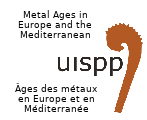Research on the religious practices of the Iberian peoples that inhabited the Mediterranean coast of the Iberian Peninsula during the Second Iron Age has traditionally analysed iconographic remains, as well as more visually “attractive” figured votive objects. Recent work has placed emphasis on the lack of an established religious architecture and the prevalence of everyday objects, often ritualized by their context. Following this latter pattern, we present a series of iron tools intended variously for agricultural and artisanal work discovered in several Iberian places of worship spanning modern day Girona on the Catalan coast to Albacete in the interior of the Southeast region. The discovery of such tools in sacred contexts has also been noted in other Mediterranean regions, such as Geometric Greece and Iron Age Italy, while the practice of combining worship and economy has also been recognised in Punic sites such as Kerkouane. The study of tools in sacred spaces is a fruitful avenue for contextualising worship within Iberian society itself: tools as votive objects in themselves and the symbolism implicit therein, tools as indicators of work and production carried out in the places of worship, and by extension, the conceptualisation of sacred space and time in Iberian worship. The time frame for the sites considered spans from the 4th to the 2nd centuries BCE, in what is considered Middle Iberian and Late Iberian periods, to which most Iberian places of worship can be dated.

 PDF version
PDF version
